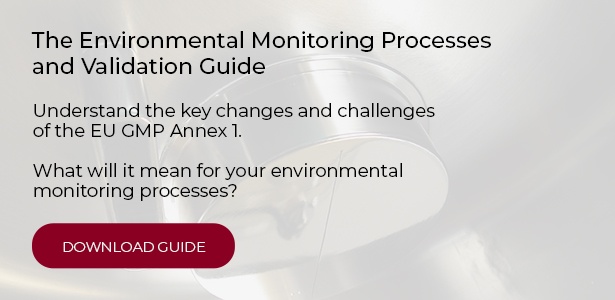 Add My Company
Add My Company

Cleanrooms are a cornerstone of many modern industries, from life sciences to semiconductor manufacturing, ensuring critical contamination control. In the October issue of Filtration + Separation, Cherwell’s Director of Quality and Technology, Steven Brimble, and Christine Troutman, Senior Applications Scientist at MicronView, explored how new filtration technologies and monitoring innovations are shaping the future of cleanroom operations.
Here’s an excerpt from the article:
“Keeping up with the demands of the modern laboratory and the substances used within it requires new innovations in air filtration and air circulation technologies. Outdated cleanrooms are more likely to cause contamination problems, as they are less effective at removing potential contaminants from the surrounding air. Advancements in sensor technologies, robotics, and automation are paving the way for smarter, more efficient cleanrooms."
Cherwell's Steven Brimble notes:
"Robotics are playing a key role in reducing contamination while increasing control and accuracy in cleanrooms. Additionally, advancements in sensor technologies now enable continuous particle monitoring, ensuring cleanrooms operate within specified tolerances.' These innovations, combined with AI-driven adaptive controls, represent the next leap in cleanroom efficiency and sustainability."
While Christine Troutman comments:
"BFPCs are well-suited for bio-related applications because of their ability to detect and differentiate biological particles from non-biological ones in real-time."
The article offers a comprehensive view of how innovations like advanced particle counters, robotic systems, and automated workflows are addressing challenges in cleanroom design and functionality.
The article covers:
- Modern cleanroom demands: Increasing complexity of laboratory workflows necessitates cutting-edge filtration systems and contamination control technologies.
- Advances in automation and robotics: Reducing human intervention helps minimise contamination risks, improve process accuracy, and streamline operations.
- Biofluorescent particle counters (BFPCs) such as BAMS: These provide real-time microbial monitoring, replacing time-consuming traditional culturing methods and detecting viable but non-culturable organisms.
- Future potential of BFPCs: Integration with advanced data management and predictive analytics could enable the real-time identification of microorganisms.
Sustainability and energy efficiency: As cleanrooms are energy-intensive, future designs will focus on reducing energy consumption, improving recycling capabilities, and implementing AI-driven adaptive controls.
Looking Ahead
Steven Brimble emphasises that cleanrooms must adapt to the evolving needs of new technologies, such as quantum computing, while maintaining sustainability. The potential for remote AI control and predictive analytics signals a transformative future for cleanroom operations.
This article highlights the importance of innovation in maintaining cleanroom efficiency, reducing contamination risks, and improving overall laboratory productivity.
Read the full article in Filtration + Separation to learn more about how new cleanroom technologies are reshaping industries.
For more information on Innovation in Cleanroom Technologies – Enhancing Efficiency and Contamination Control talk to Cherwell Laboratories Ltd


